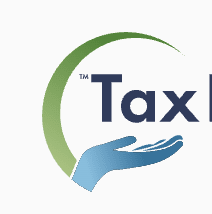
Making your home more eco-friendly is good for the planet and excellent for your wallet, especially during tax season. With generous federal tax incentives available for energy-efficient home improvements, now is the perfect time to consider upgrading your property.
Whether you're planning major renovations or smaller updates, our best tax relief services can help you navigate these valuable tax breaks while maximizing your savings and reducing your environmental impact.
This article will guide you through the latest tax credits and deductions, help you understand which improvements qualify, and show you how to maximize your benefits.
Key Insights on Maximizing Energy Efficiency Benefits
- Homeowners can claim up to $3,200 annually in energy efficiency tax credits.
- The Residential Clean Energy Credit offers a 30% tax credit with no annual limit through 2032.
- Home energy audits now qualify for a $150 tax credit, helping you plan improvements strategically.
- Many state-level incentives can be combined with federal tax credits for additional savings.

Residential Energy Efficiency Tax Credits
For homeowners, several tax credits are available to help offset the costs of energy-efficient upgrades. These credits can significantly reduce your tax liability and make sustainable home improvements more affordable.
Energy Efficient Home Improvement Credit
The Energy Efficient Home Improvement Credit makes upgrading your home's efficiency more affordable. You can receive a credit worth 30% of your qualified expenses up to specific limits.
- Eligible improvements: You can claim up to $250 per exterior door (a maximum of $500). Energy-efficient windows and skylights can earn you up to $600 in credits. Insulation and air-sealing materials—that meet International Energy Conservation Code (IECC) standards— don't have a specific limit within the overall $1,200 annual cap for building envelope improvements.
- Maximum annual credit amounts: The maximum annual credit is generally capped at $1,200 for building envelope improvements, but specific improvements, such as heat pumps, water heaters, and biomass stoves, can qualify for up to $2,000. Plus, claiming a home energy audit can net you up to $150 in savings.
- Credit calculation: The credit is calculated as 30% of the total eligible costs up to the specified limits. For example, if you install a qualified central air conditioner, water heater, or furnace, you can claim up to $600. The credit limit for heat pumps, biomass stoves, and biomass boilers increases to $2,000 annually, making these high-efficiency options more attainable.
Residential Clean Energy Credit
If you're considering renewable energy for your home, the Residential Clean Energy Credit offers substantial benefits. This credit applies to investments in renewable energy technologies for your home, helping you reduce your carbon footprint and lower energy costs.
Eligible technologies: The credit covers 30% of your costs for installing qualified clean energy systems through 2032, with no annual limit (except for fuel cells). Eligible technologies include:
Solar electric panels and solar water heaters
Wind turbines
Geothermal heat pumps
Battery storage technology (new for 2023)
Fuel cells (with specific capacity-based limits)
Credit amount: The credit is equal to 30% of the cost of the eligible property, with no annual limit (except for fuel cells, which have capacity-based limits).
Duration of the credit: The 30% credit is available through 2032, providing a long-term incentive for homeowners to invest in clean energy.
Commercial Energy Efficiency Tax Deductions
Section 179D Deduction
Business owners and commercial property managers can benefit from the Section 179D deduction when implementing energy-efficient improvements.
This deduction applies to commercial buildings that achieve significant energy cost savings through improvements to lighting, HVAC systems, or the building envelope. The deduction amount is calculated based on the square footage of the improved space and the level of energy reduction achieved.
Energy-Efficient Commercial Buildings Deduction
Recent updates have increased the available deduction amounts for commercial buildings. However, to qualify for the maximum benefits, projects must meet specific wage and apprenticeship requirements.
These requirements ensure that energy efficiency improvements create quality jobs while reducing environmental impact.
Maximizing Your Tax Benefits
To make the most of energy efficiency tax incentives, it’s important to develop a strategic approach and stay organized. Here’s what you can do:
For Homeowners
Combine different credits: Homeowners can potentially combine the Energy Efficient Home Improvement Credit and the Residential Clean Energy Credit in the same year for different projects.
Plan multi-year improvements: Consider planning your energy efficiency improvements over multiple years to take full advantage of annual credit limits.
Document: Keep detailed records of all eligible expenses, including receipts, invoices, and product specifications, to support your tax credit claims.
For Businesses
- Leverage credits and deductions: Businesses should explore the possibility of utilizing both the Section 179D deduction and other relevant tax credits to maximize their tax savings.
- Consider energy audits: A professional energy audit can help identify the most cost-effective energy efficiency improvements for your building.
- Long-term energy savings vs. upfront costs: Evaluate the long-term energy savings and environmental benefits of energy efficiency projects and the upfront tax incentives.
Recent Changes and Future Outlook
The Inflation Reduction Act has significantly enhanced energy efficiency tax incentives. Credits are now more generous and available for a broader range of improvements.
Looking ahead, some requirements will change in 2025, particularly regarding manufacturer certification and product identification numbers. Additionally, many states offer complementary incentives that can be combined with federal credits for even more significant savings.
Bottom Line: Going Green Pays Off
Energy efficiency improvements present compelling opportunities in 2025, with homeowners eligible for up to $3,200 in annual tax credits and businesses benefiting from enhanced Section 179D deductions. To maximize these incentives, consider working with one of our recommended tax relief services.
These upgrades also deliver lasting value through reduced energy bills and a smaller carbon footprint. By investing in energy-efficient improvements, you're making a smart financial decision and contributing to a more sustainable future.



